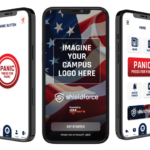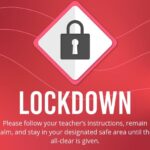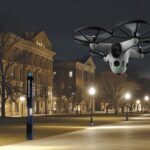A new poll revealed a “critical gap” in automated external defibrillator (AED) awareness with most Americans wanting a bystander to use the device to save their life in a cardiac emergency but less than half feeling they have the same responsibility.
The survey, conducted by the Harris Poll and commissioned by ZOLL, reveals that while 90% of Americans would want a bystander to use an AED to help them, 53% feel it is not their responsibility and only 54% say they would feel confident using the device.
RELATED ARTICLE: UVM’s Cat ECare Provides AEDs on Campus to Save Lives of Cardiac Arrest Victims
Likely contributing to hesitancy is a lack of knowledge, ZOLL says. Although 83% of Americans believe using an AED after calling 911 is the best thing they can do if someone is in sudden cardiac arrests (SCA), 32% would not be likely to use one if they witnessed someone in SCA, and 42% don’t feel confident doing so because they do not know how to use one.
“With a widespread call for more bystander help and only 46% of Americans confident in their ability to use an AED, it’s crucial to make AEDs as instinctive to use as calling 911 in an emergency,” the company says.
According to the American Heart Association, SCA affects between 7,000 and 23,000 children under the age of 18 every year, although the actual number is likely higher. Over 100,000 SCAs occur in public each year.
ZOLL’s AED Campaign
ZOLL has a public awareness campaign, Anything Can Happen. Anyone Can Help.™, that is focused on delivering education to ensure everyone knows AEDs are there to be used by anyone. It was launched with the help of Buffalo Bills safety Damar Hamlin. On Jan. 2, 2023, 24-year-old Hamlin collapsed on the field from a heart attack he experienced during a game against the Cincinnati Bengals. Fortunately, Hamlin was resuscitated with CPR and an AED.
Some misconceptions the campaign addresses include:
- Calling 911 is enough to save someone suffering SCA. While 96% of Americans believe their responsibility in a cardiac emergency is to call 911, EMS response times average seven to 14 minutes. Treatment in the first three minutes of SCA is critical for survival, when CPR and/or an AED shock can make the biggest difference.
- AEDs are difficult to use. Approximately 46% of Americans were surprised to learn an AED doesn’t just shock a victim but offers real-time, easy-to-follow, step-by-step visual and audio instructions on how to perform CPR and administer a shock if necessary.
RELATED ARTICLE: Student Who Learned CPR at School Saves Child Who Fell Into Pool
The HEARTS Act Supports AEDs in Schools
The poll results come on the heels of the passing of the HEARTS Act, a federal law passed by President Joe Biden in Dec. 2024 that helps schools and childcare centers respond to cardiac emergencies.
The act provides grants for schools to buy AEDs and other emergency equipment. It also requires schools to develop and implement cardiac emergency response plans and to train students and staff in CPR and AED use.













